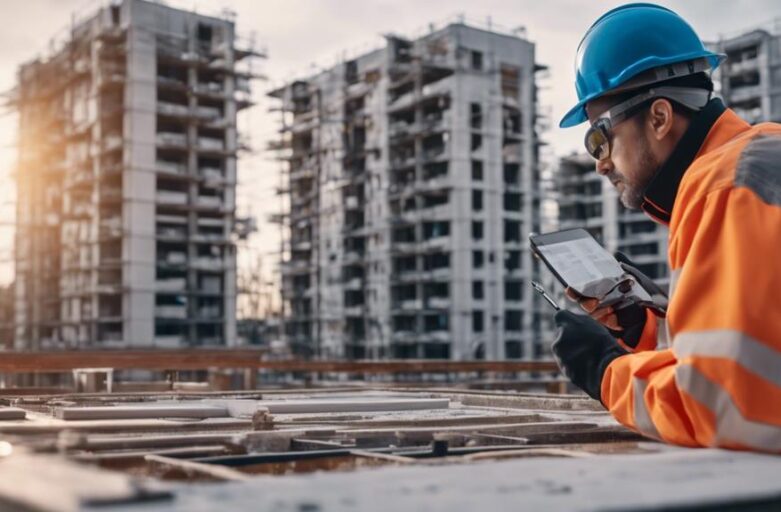Get ready to become a pro at checking your home! Here's how:
- Know what you're looking for: From the top of your roof to the pipes under your house, leave no stone unturned.
- Only work with the best: Make sure your inspector knows their stuff and has the right qualifications.
- Follow the rules: Your local area has building codes – these are like rules for houses. Stick to them!
- Safety first: Look out for things that might be dangerous and find ways to make them safe.
- Look deep into the structure: Use cool gadgets to find problems in hard-to-reach places.
- Check your electricity: Pay special attention to the circuit breakers.
- Inspect your wires and outlets: Make sure they're all working properly.
- Don't forget about water and air: Look for leaks or blockages in your plumbing and heating/cooling systems.
- Deal with pests quickly: If bugs or rodents show up, take action and keep a record.
- Fix things afterwards: After the inspection, make any necessary repairs.
By following these tips, your home inspection will be a breeze. Ready to dive deeper into each step? Stay tuned!
Key Takeaways
- Make sure the people inspecting the house have the right skills and certificates. This includes things like special training and official licenses.
- Always focus on safety first. Look out for anything that could be dangerous or unhealthy in the house.
- Use high-tech gadgets, like heat-detecting cameras, to help spot problems that might be hidden.
- Check all the important systems in the house like the wires, pipes, and heating or cooling systems. Make sure they're working properly and safely.
- Write down all the things you find. Give easy-to-understand reports to the people who own the house, and make sure any problems get fixed.
Understanding Inspection Scope
Before we dive into the process of checking a building, it's important to understand what an 'inspection scope' is. It's like a map that tells you what parts of the house will be checked carefully.
The scope includes important parts like the roof, the outside of the house, the base that supports the house, the heating and cooling systems, the pipes, and the electric systems. These are the main parts that keep the house standing and make it comfortable to live in. The scope also tells you what areas won't be looked at, like places that can't be reached or things that aren't a permanent part of the house.
Knowing what the inspection scope means is like knowing your house's language. It helps you know what the inspection will cover and makes sure everything important gets checked correctly. It's all about making sure you're in the loop and feel part of the process.
Inspector Qualifications and Credentials
Let's talk about what makes a good building inspector.
First, they should have a license and be registered with the right group in your state. This shows they've met tough requirements set by experts.
But having a license isn't all. Think about their education, training, and experience. Don't be shy to ask about their past work. Have they been doing this for a long time, or are they just starting?
Good inspectors also have special certificates from professional groups. These show that the inspector works hard, is dedicated, and really knows their stuff.
Lastly, the best inspectors keep up with new rules about buildings. This could mean taking more classes. It also means they've to pass background checks to make sure they behave professionally.
Adherence to Local Building Codes
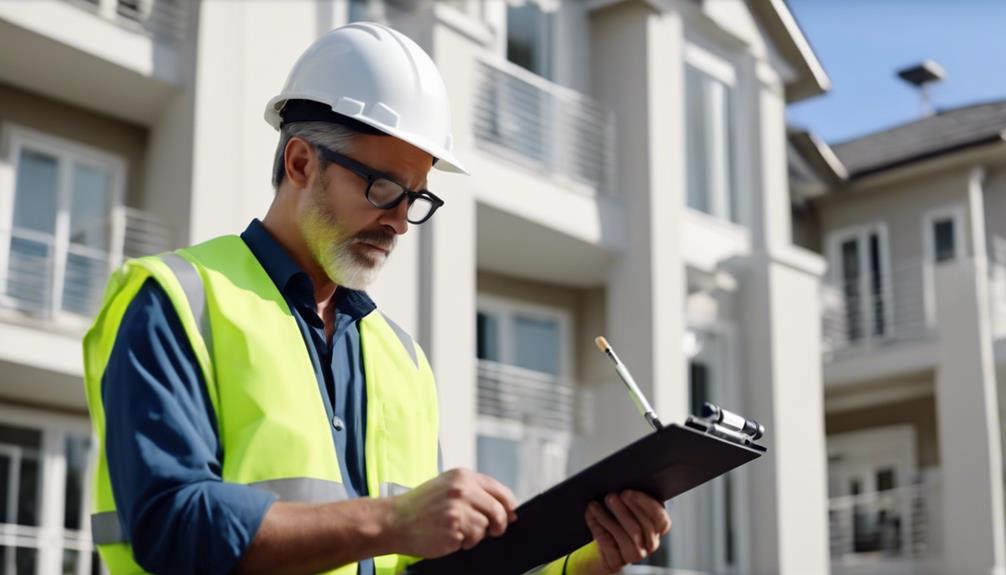
Understanding and following local building codes is very important when you're building a house. These codes are rules that help protect your money and make sure your house is built safely and strongly.
If you ignore these rules, you could get fined, your building could get delayed, or you might even have legal problems. So, it's not just a good idea to follow these codes, it's a must.
Understanding Local Building Codes
Understanding local building codes is crucial for a smooth house inspection and ensuring safety. These rules must be followed to avoid fines, delays, or legal issues. Inspectors play a vital role in checking compliance and identifying any violations. By adhering to these codes, homeowners contribute to the safety of their community. It's essential to familiarize yourself with local building codes to create a safer and better neighborhood.
Take time to learn and understand your local building codes to ensure your home is safe and compliant, benefiting not only yourself but also your community.
Complying With Code Regulations
Homes need to be built in a specific way because of rules called local building codes. They're important in making sure our houses are safe and built right, from the bottom to the top. It's like having a list of important points to check for a safe house.
A special person called a building inspector will come and check out your house. They'll make sure everything in your house follows these rules. It's like a big safety check-up for your home!
If you don't follow these rules, you could get into trouble and might have to fix things in your house. So, let's all do our part in making sure our community is safe and follows these building rules.
Prioritizing Safety Concerns
Checking out houses is really important because we want to make sure everyone is safe. If we find problems early, like a weak spot in the building or a fire risk, we can fix them before they cause harm.
It's not just about making a check-list, it's about making sure every home is safe for people to live in.
Identifying Potential Hazards
When you're checking out a house to make sure it's safe, there are lots of things to keep an eye out for. You want to be sure that there aren't any dangers in the house, like wires that could cause a fire or walls and foundations with cracks.
But it's not just about finding problems. It's about making sure the house is a safe place where a family can live happily.
Here's what you need to do:
Look for health risks. For example, mold, asbestos, or paint that has lead in it can cause serious health problems if they're not taken care of.
Check that safety devices are working properly. Things like smoke detectors, carbon monoxide detectors, and fire extinguishers need to be in good working order to keep people safe.
You should also watch out for things that could cause someone to trip and fall, like loose carpets or handrails that aren't sturdy.
Implementing Preventative Measures
Safety first! That's the rule when it comes to your home. Don't just think about how it looks or what you can fix up. You need to think about things like bad wiring, shaky building structures, or not enough air flow. During home checks, remember to keep an eye out for dangers like stairs that aren't sturdy or gas lines that are leaking.
To make your home safer, you should do things to prevent accidents. Put in smoke detectors and carbon monoxide alarms. Make sure your stairs have strong handrails. This way, your home will be a safe and comfy place.
Always check and revise the safety rules to meet building standards. It's not just about following the rules, but creating a safe, friendly place for everyone living there. Remember, putting safety first in your home is a way of caring for yourself and your loved ones.
Regular Safety Inspections
Regular home safety checks are super important. They help make sure your house is safe and follows all the building laws. These checks help spot any risks that could harm your home's structure.
Inspectors will look at the electrical stuff in your home, like the wiring, to make sure it's not dangerous and won't cause a fire. They also check if your house is strong enough to handle things like storms. Fire safety is also important, so they'll check if your smoke detectors are working and if the fire exits aren't blocked.
Structural Inspection Techniques
Want to make sure a house is safe and sturdy? It's all about learning how to check the building's structure. Think of it like being a detective, but instead of solving crimes, you're looking for problems in the building that could make it unsafe. And the best part? You don't have to break anything to do it!
Your eyes are your best tool. Just by looking, you can find clues like cracks or bends that tell you something might be wrong. But there's more to it than just seeing. You can also touch the house to feel if it's strong and healthy. Hidden problems? They can't hide from a good touch-check!
Next, it's time to bring out the gadgets. Cool tools like laser levels and moisture meters help you measure if things are straight and if the house is too damp. Thermal imaging cameras can even show you problems you can't see!
Evaluating Electrical Systems
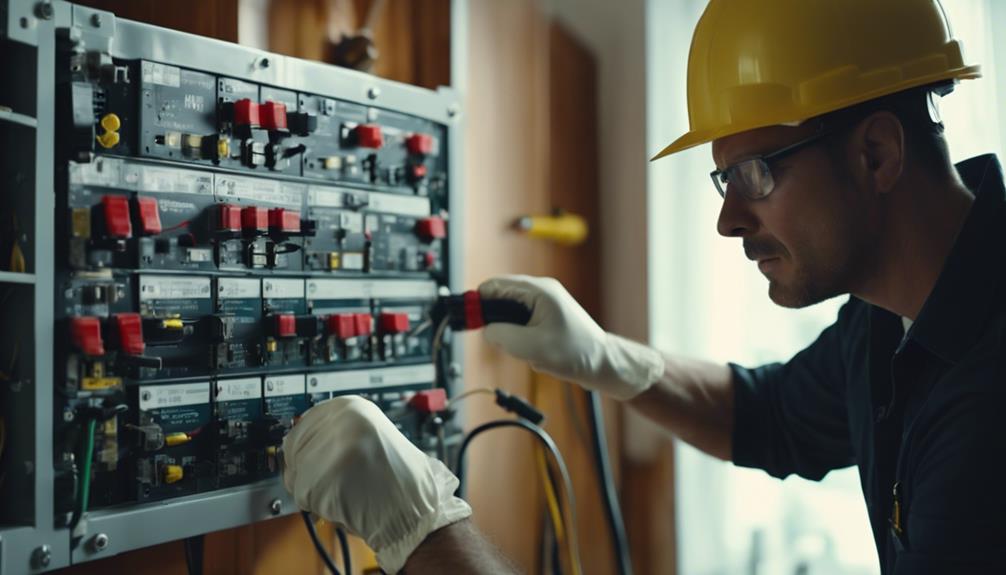
Alright, let's dive into the world of home electricity and its safety.
The main hero here is the circuit breaker. This device is like the guardian of your home's electrical system. It's not just about making sure everything works right, but also about keeping everyone safe.
We're going to learn how to check wires and electrical outlets, making sure they're safe and up-to-date. This way, we can keep everyone safe from any possible electrical dangers.
Understanding Circuit Breakers
If you want to take good care of your home's electric system, it's important to learn about circuit breakers. These are like superheroes, protecting your house from electrical dangers like too much power or shorts. Picture them like guards for your home's power system. When a breaker trips, or turns off, it's like a watchful guard saying 'Hey, something's not safe!'
There are different types of circuit breakers, like standard ones, GFCI, and AFCI. Each has a special safety job. It's a good idea to check these breakers to make sure they're labeled correctly, connected well, and not damaged. Think of them as the quiet, dependable protectors of your house.
Inspection of Wiring Systems
Let's switch gears from circuit breakers and focus on your home's wiring systems. This is like a maze of wires that needs a careful check-up. Building rules make sure the wires are put in correctly, helping your home's electricity work safely and well.
The heart of your home's electricity is the electrical panel. It needs a check-up for correct labels, the right amount of electricity flow, and enough covering on the main wires. By just looking at plugs and seeing if they work, we can find problems. Also, there should be a special device called a ground fault circuit interrupter (GFCI) in certain places to stop electrical dangers.
Be on the lookout for danger signs like bare wires or damaged covering. Together, we can make sure your home is safe, secure, and follows the rules.
Assessing Outlet Safety
Your home's power system has a heart, and that's the electrical panel. But, don't forget about your outlets! They need to be safe too. What does safe mean? Your outlets need to be grounded and wired correctly. This stops any electricity accidents from happening.
One thing to look at is if you have GFCI outlets in places where there's a lot of moisture, like your kitchen or bathroom. These outlets help stop bad shocks, which keeps everyone in your house safe.
A great habit is to test your outlets often. You can do this with a plug tester. This makes sure that the wiring is good and that the circuits are protected.
Keep an eye out for signs that something might be wrong, like if your outlets are too hot or if there are burn marks. This could mean danger.
Last thing, make sure your outlets are tight on the wall and that the cover plates are on. This might seem small, but it's very important.
Assessing Plumbing and HVAC Systems
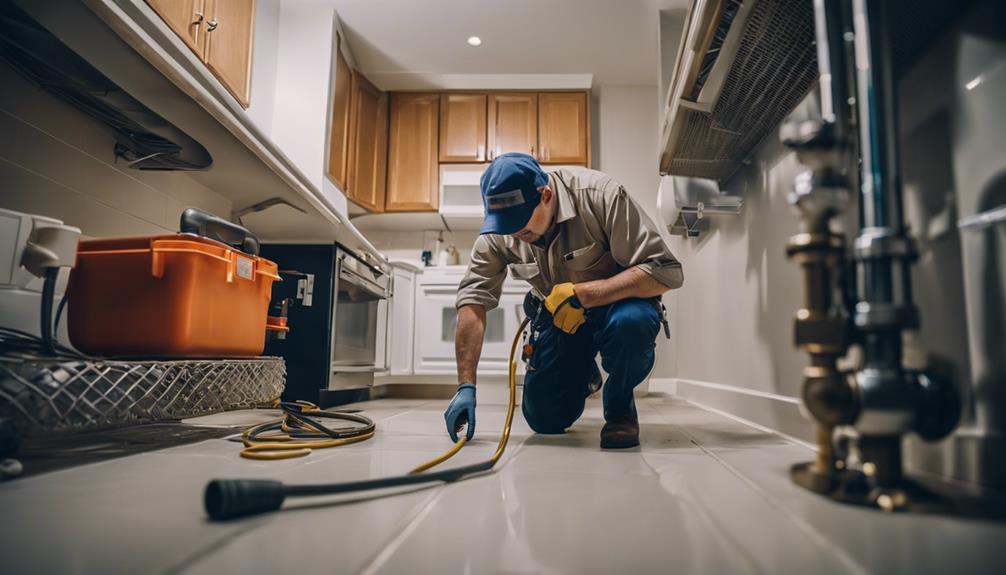
Looking at a house, you mightn't think about the pipes and heating or cooling systems. But these are really important and as a house inspector, it's your job to check them out. You're sort of like a house detective, keeping an eye out for any problems that could cause trouble later on.
The pipes in a house are like its veins. They carry water all around the home. It's your job to make sure there are no leaks or blockages. If you miss a leak, it could cause a lot of damage to the house over time. It's like giving the house a regular check-up to keep it healthy.
At the same time, you need to look at the heating and cooling systems. Are they working properly? Is the house at the right temperature? This isn't just about making sure the house is comfortable. It also helps to keep the energy bills down. You've got to watch out for things like rust, which could mean the system needs fixing or replacing. Catching these issues early helps to avoid bigger problems down the line.
Identifying Potential Pest Infestations
If you're a keen inspector, you'll know it's super important to look for bugs and rodents when checking out a house. This isn't just to make sure the house is nice to live in, it's also to stop damage to the house and to keep people healthy. Bugs like termites can eat away at the wood in a house, or rodents might leave droppings in hidden places. These pests can cause serious harm to a house and the people living in it.
With your great detective skills, you can spot signs of pests. Things like chewed up furniture or a weird smell might mean there are pests in the house. But, you can't just spot the problem, you need to do something about it. Use what's called an Integrated Pest Management approach. This way of dealing with pests focuses on stopping them from coming in the first place, keeping an eye out for them, and controlling any that are found, all while being kind to the environment. It's a smart choice for keeping the house and the people in it healthy.
Documenting and Reporting Findings
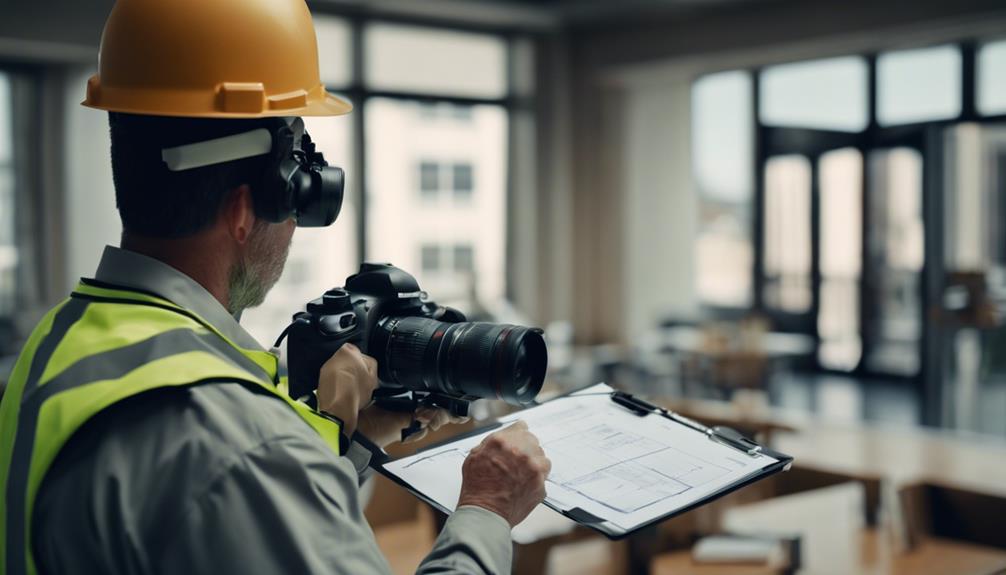
Let's talk about the super important task of writing down and sharing your findings. This needs you to be super careful and accurate. This is where your inspection report comes in handy. It's like a treasure chest, holding all the hard work you've done and everything you've found.
But you're doing more than just jotting down things you've seen. You're making a map for your clients to follow. This map helps them see how their property looks right now, what parts need fixing, and what they should do to make it better.
To make things easier, let's break down the main steps in a simple chart:
| Steps | What It Means | Why It Matters |
|---|---|---|
| Writing It Down | Take photos and write down all your findings | It's proof of what you've found |
| Pointing Out Problems | Clearly show all problem areas | Helps clients know what to fix |
| Giving Advice | Share ideas for fixing or improving things | Helps clients decide what to do next |
Post-Inspection Follow-ups and Repairs
After your house has been inspected, you can't just forget about it. Every issue that was found needs to be fixed right away. This is important to keep your house safe and sturdy.
Do you have problems with things like your heating system or plumbing? Don't try to fix it on your own. You should let trained experts handle it. They know how to do the job properly. This will keep your house running well and safely.
If you find something that might be dangerous, fix it right away. You should always put safety first. It's very important to keep your family safe and sound.
When everything is fixed, you need to check again. This is called a follow-up inspection. It makes sure everything was fixed correctly. It also gives you peace of mind, knowing your house is in good shape.
Don't forget to keep track of all the work that was done. Write down all the repairs and follow-up inspections. This helps you take care of your home and shows you're part of a neighborhood that cares about safety.
Conclusion
Ready with your home check-up list? Great! Think about the following points.
Make sure you know what areas you're checking. Make sure your inspector knows his stuff. Stick to the rules your city or town has for homes. Safety first is always the rule.
Look at the big things like the building's frame, the pipes, the heating and cooling system, and keep an eye out for bugs.
Write down everything and share it in a report. After the check-up, fix what needs fixing.
Love your home and take good care of it. A home that's checked well is a home that's safe and cozy.


